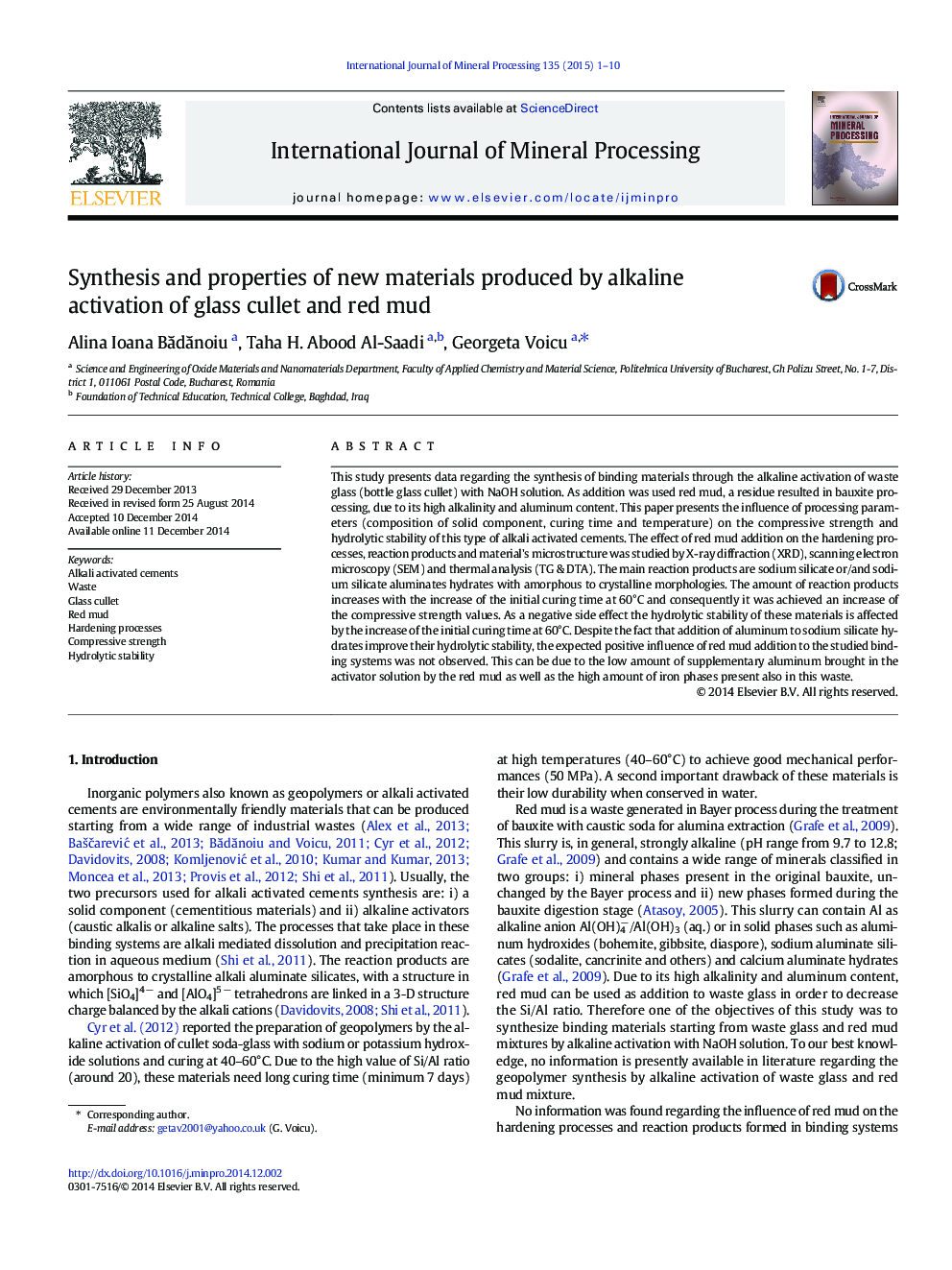| Article ID | Journal | Published Year | Pages | File Type |
|---|---|---|---|---|
| 6659380 | International Journal of Mineral Processing | 2015 | 10 Pages |
Abstract
This study presents data regarding the synthesis of binding materials through the alkaline activation of waste glass (bottle glass cullet) with NaOH solution. As addition was used red mud, a residue resulted in bauxite processing, due to its high alkalinity and aluminum content. This paper presents the influence of processing parameters (composition of solid component, curing time and temperature) on the compressive strength and hydrolytic stability of this type of alkali activated cements. The effect of red mud addition on the hardening processes, reaction products and material's microstructure was studied by X-ray diffraction (XRD), scanning electron microscopy (SEM) and thermal analysis (TG & DTA). The main reaction products are sodium silicate or/and sodium silicate aluminates hydrates with amorphous to crystalline morphologies. The amount of reaction products increases with the increase of the initial curing time at 60°C and consequently it was achieved an increase of the compressive strength values. As a negative side effect the hydrolytic stability of these materials is affected by the increase of the initial curing time at 60°C. Despite the fact that addition of aluminum to sodium silicate hydrates improve their hydrolytic stability, the expected positive influence of red mud addition to the studied binding systems was not observed. This can be due to the low amount of supplementary aluminum brought in the activator solution by the red mud as well as the high amount of iron phases present also in this waste.
Related Topics
Physical Sciences and Engineering
Chemical Engineering
Chemical Engineering (General)
Authors
Alina Ioana BÄdÄnoiu, Taha H. Abood Al-Saadi, Georgeta Voicu,
